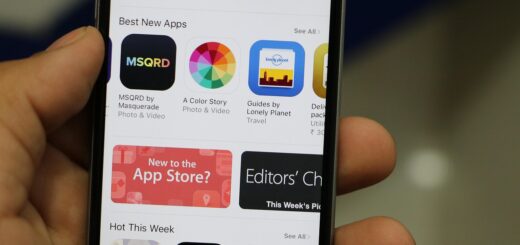How to extend your phone’s battery life – Myths and Reality

How to extend your phone’s battery, is a question that most people search for when their phones begin to misbehave. Battery life is one of the most common concerns for smartphone users because we are caught up in an age where consumption of information has taken a life of its own. While most modern manufacturers take great care to make the user experience with respect to the battery life great and try to make the phone available for use for the maximum duration between charging, batteries are still way behind the other components in terms of technology. We still do not have a perfect battery tech. A lithium-ion battery is the best we have available now.
Then there is this problem of misinformation regarding batteries so widespread in the media and web. With so much misinformation floating around, it’s essential to separate myths from reality. In this guide, we’ll debunk common battery myths and reveal the best practices to extend your phone’s battery life.
How to extend Your Phone’s battery: Safety concerns
How to extend your phone’s battery without worrying about the safety of the phone? Here we have put together some of the safety mechanisms in place for ensuring that the user does not have to worry about the safety while in use or while charging.
Battery Protection System: Handles battery charging management.
Power Management IC: Manages power distribution within the phone.
Charging IC: Manages how the battery is charged, including fast charging, trickle charging, and stopping charging when full.
Thermal Sensors and Protection Circuits: Monitor and regulate battery temperature during use and charging.
Software-Based Battery Protection: Implements software-driven mechanisms to enhance battery safety.
Before we delve into the topic of how to extend your phone’s battery, let’s take a little time to discuss the myths circulating about the phone battery in general which would give us the correct perspective of looking at the topic.
Myth #1: Closing Background Apps Saves Battery
Reality:
Many users believe that closing apps running in the background helps conserve battery life. However, modern operating systems like Android and iOS are designed to manage background apps efficiently. Force-closing apps can actually consume more battery, as reopening them requires additional processing power.
What to Do Instead: Let the operating system handle background apps. Only close an app if it’s unresponsive or malfunctioning.
Myth #2: Charging Your Phone Overnight Damages the Battery
Reality:
Most modern smartphones come with intelligent charging mechanisms that prevent overcharging. Once your phone reaches 100%, it stops drawing power, ensuring the battery isn’t damaged. Manufacturers know that a malfunction with the battery charging mechanism can cause irrepairable damage to the phone they have put in place more than one safety systems in place. some of them are listed above.
What to Do Instead: Use quality chargers and cables. If your phone has an optimized charging feature, enable it to slow down charging when left plugged in overnight.
Myth #3: Always Let Your Battery Drain to 0% Before Charging
Reality:
Lithium-ion batteries, used in most smartphones, perform best when kept between 20% and 80% charge. Deep discharges (letting your battery reach 0%) can reduce its lifespan over time.
What to Do Instead: Charge your phone when it drops to around 20% and unplug it before it reaches 100% if possible.
Myth #4: Using Your Phone While Charging is Dangerous
Reality:
Using your phone while charging is safe as long as you use an original charger and cable. The myth arises from cases involving faulty third-party chargers that may overheat or cause electrical issues.
What to Do Instead: Stick to original or certified third-party accessories to ensure safe charging.
Myth #5: Higher Screen Brightness Always Drains Battery Faster
Reality:
While higher brightness does consume more power, enabling Auto-Brightness (Adaptive Brightness) can optimize battery usage by adjusting brightness according to ambient light conditions.
What to Do Instead: Use Auto-Brightness and consider dark mode, especially on OLED or AMOLED displays, as it helps conserve battery.
How to Extend your Phone’s Battery: Best Practices
1. Reduce Unnecessary Notifications
Vibrations, sounds, and screen wake-ups from notifications consume battery power. Each time a notification arrives, the phone uses energy to light up the screen, vibrate, or play a sound. Reducing notifications for non-essential apps helps minimize these power drains, ultimately improving battery life.
2. Enable Battery Saver Mode
Most smartphones have a built-in Battery Saver Mode that limits background app activity, reduces screen brightness, and optimizes CPU performance to conserve energy. This mode is especially useful when the battery is running low, as it extends usage time by prioritizing only essential functions.
3. Turn Off Unused Connectivity Features
Wireless connections like Bluetooth, Wi-Fi, GPS, and mobile data continuously search for signals, consuming power even when not in use. Turning them off when not needed prevents unnecessary battery drain. For example, enabling Airplane Mode in areas with weak signals can prevent excessive power loss from network searching.
4. Keep Software Updated
Software updates often include battery optimization improvements, bug fixes, and better power management techniques. Updates can enhance app efficiency and optimize background processes, ensuring that the phone runs smoothly while consuming less power. Keeping both the operating system and apps updated helps maintain battery health.
5. Avoid Extreme Temperatures
Exposing your phone to extreme temperatures—whether too hot or too cold—can degrade battery performance and lifespan.
- High temperatures can cause overheating, increasing battery wear and potentially leading to swelling or damage.
- Cold temperatures slow down chemical reactions in the battery, reducing efficiency and causing sudden shutdowns.
Keeping the phone within a recommended temperature range (typically 20–25°C or 68–77°F) helps preserve battery longevity and ensures stable performance.
If you enjoyed reading our take on how to extend your phone’s battery we recommend reading some of our other articles, and one on the top 5 budget smartphones if you are into gadgets and want to keep abreast of the latest developments and the tech behind it.
Final Thoughts
Now that you know the truth about smartphone battery life, you can take better care of your device and maximize its longevity. By following these practical tips and ignoring common myths, you can ensure your phone stays powered longer throughout the day.



